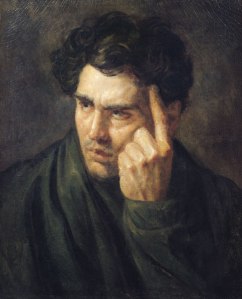by Serena Johnson

Of the four Daniell’s paintings, “Coaduwar Gaut” is the only one that captures the dramatically figurative description given to us by Dean Mahomet in his first letter. The message most implicit in the painting is one of “benevolence and good-will” (Mahomet, Letter I) between the inhabitants. Although we cannot see any facial expressions, nobody in the foreground of the painting is alone and we can even see a couple of people in the center waving at others. Mahomet confirms this when he says “we are never without our neighbors,” implying that life is community-oriented and relatively harmonious. In regards to the physical landscape, Mahomet gives an extremely romantic description. He oddly mentions John Milton and the Garden of Eden to touch on his idealization of nature. The Garden of Eden is a major setting in Milton’s Paradise Lost, and the painting definitely embodies the lavish, green, and untainted appearance of the infamous garden. Mahomet mentions that there are “beautifully diversified” gardens and flowers everywhere, seen not only in the front of the painting but also in the middle and background. What the painting fails to represent that I found in Mahomet’s description is the condemnation of classism and rejection of industrialization. In order to do so, the painting would have to take the form of poetry in which we can visibly see the people either ignoring or rejecting objects that symbolize Occidental power. It could be possible that whatever location was the inspiration for this painting did not have any kind of Occidental influences, but with other paintings we have seen, there is almost always some kind of intrusion by the artist in order to put themselves into a painting that was otherwise intended to depict the Oriental. Mahomet, ironically, uses a Western author in order to describe the landscape – but not in a way that praises Milton more than what he was describing.


